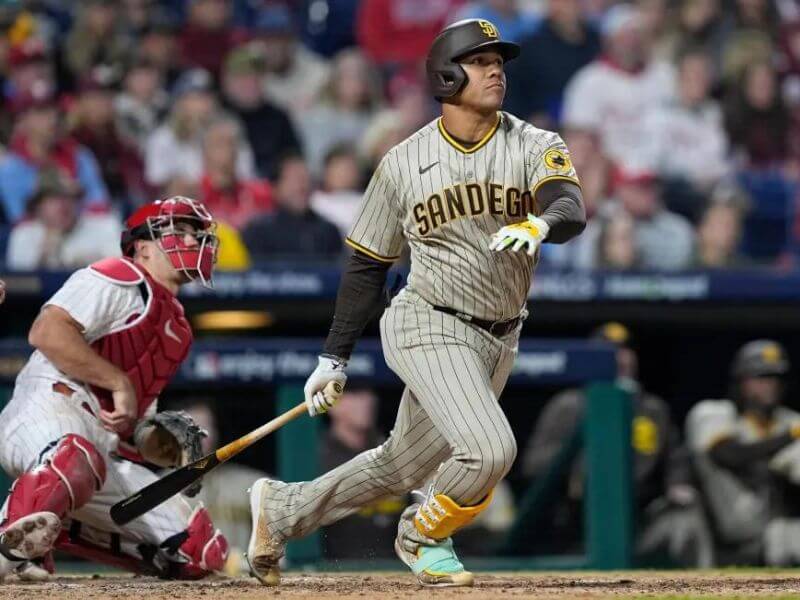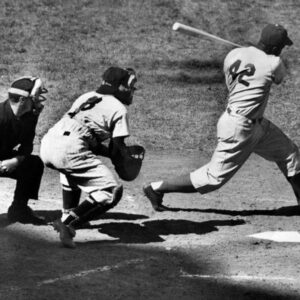What is a good era in mlb? In the world of baseball, where every pitch and every run counts, a pitcher’s ERA holds immense significance. It quantifies the number of earned runs a pitcher permits per nine innings pitched, providing an insight into their performance. The lower the ERA, the better the pitcher is deemed to perform. But what’s the exact standard for a good ERA in baseball? Let’s delve into this topic further.
What’s A Good ERA In Baseball – Knowing the Basics
In the MLB, people consider a pitcher’s ERA ranging between 3 and 4 as good. The elite pitchers in the league can often maintain an ERA under 3, which is exceptional. A subpar ERA is an ERA above 4. Pitchers over this mark may find it challenging to keep their spot in the rotation.
However, it’s crucial to note that the ERA can differ based on the level of baseball. For instance, in college baseball, a decent ERA may hover around 4. That is because the level of competition is lower than that of the pros. Ultimately, the determination of a good ERA in baseball relies on many different factors.
What Is ERA In Baseball?
ERA, a short form of Earned Run Average, is a metric utilized to gauge a pitcher’s efficacy. Calculating ERA is simple. It merely represents the total number of earned runs a pitcher surrenders on average for every nine innings they pitch. And to qualify as an earned run, the opposition must score without any mishaps or errors during the play.

Why Is The Baseball ERA Stat Important?
ERA is an important statistic because it provides a measure of a pitcher’s effectiveness in preventing runs from being scored. A low ERA indicates that a pitcher is doing a good job of keeping batters from scoring. A high ERA suggests that a pitcher is struggling to get batters out.
The exact definition of a good ERA can vary depending on a number of factors, including the quality of the opposition, and the ballpark in which they pitch.
It is worth noting that ERA is not a perfect measure of a pitcher’s effectiveness, as it does not take into account factors such as the quality of a pitcher’s defense or the run support they receive from their team. However, it remains a widely used and respected statistic in the world of baseball.
Understanding The Significance Of ERA
ERA And Pitcher Performance
In baseball, teams use ERA as an important stat to measure a pitcher’s ability to prevent runs from scoring. The lower the ERA, the better the pitcher has performed. A pitcher with a low ERA is more likely to be considered a top performer at the position.
Pitchers with high ERAs, on the other hand, are usually less effective. They may struggle to get batters out and those runners end up scoring. A high ERA can also indicate that a pitcher is struggling with injuries or other issues that are affecting their performance. It can also mean that they had a few rough outings early on so the total ERA number was a bit inflated and not indicative of current performance.
ERA And Team Success
ERA is not only important for individual pitchers, but it also plays a significant role in team success. Teams with strong pitching staffs, which typically have low ERAs, are more likely to win games and compete for championships.
In addition, a team’s ERA can also be an indicator of the overall strength of its defense. If a team has a high ERA, it may be because its defense is making too many errors or not making enough plays to support its pitchers.
ERA Baseball Stats And Historical Trends
ERA has changed significantly over the course of baseball history. In the early days of the sport, pitchers had much lower ERAs compared to today. Pitchers expected to throw complete games and often pitched more innings than modern-day pitchers. As a result, the average ERA was much lower than it is today. For example, in the 1908 season, the league-wide ERA was just 2.41.
In recent years, baseball has become a more specialized sport due to load management and the increasing use of analytics. The increased use of analytics in baseball has had a significant impact on a pitcher’s ERA.
As a result, pitchers who are able to use analytics to their advantage may be able to lower their ERAs and become more effective on the mound. Additionally, the use of defensive shifts and other defensive strategies based on data has also played a role in lowering a pitcher’s ERA by limiting the number of hits and runs allowed.
Overall, ERA is an important statistic in baseball that can help fans and analysts evaluate pitchers and teams. While it is not the only measure of success, it is a valuable tool for understanding the game and its players.
What Is A Good ERA In Baseball – Key Factors
When evaluating a pitcher’s ERA, you need to consider several factors that can affect this statistic. Here are some of the factors that can influence a pitcher’s ERA:
Ballpark
The ballpark where a pitcher plays can have a significant impact on their ERA. Some ballparks have dimensions that make it easier for hitters to hit home runs, while others have larger outfields that make it more challenging to hit the ball out of the park. As a result, pitchers who play in hitter-friendly ballparks more often may have higher ERAs than those who play in pitcher-friendly ballparks.

Weather Conditions
The fickle nature of the weather may have a considerable impact on a pitcher’s ERA. Baseball experts widely acknowledge that hot weather causes the ball to travel a greater distance through the air, making it easier for batters to hit bombs.
Conversely, when the weather is frigid and windy, the ball doesn’t typically travel as far, making it harder for batters to smash home runs. Warmer and more humid climates may lead to higher ERAs for pitchers compared to their counterparts who play in colder and windier environments.
Pitcher Ability
Finally, a pitcher’s ability is perhaps the most significant factor that can affect their ERA. Pitchers with excellent control, movement, and velocity are generally more effective at getting batters out and keeping runs off the board. Additionally, pitchers who can induce ground balls rather than fly balls tend to have lower ERAs, as ground balls are less likely to result in hits and home runs.
When evaluating a pitcher’s ERA and trying to figure out whats a good era, you need to consider several factors that can affect this stat. Ballpark, weather conditions, and pitcher ability are just a few of the many factors that can influence a pitcher’s ERA.
Above is information what is a good era in mlb. Hopefully, through the above content, you have a more detailed understanding of what is a good era in mlb .Thank you for reading our post.









